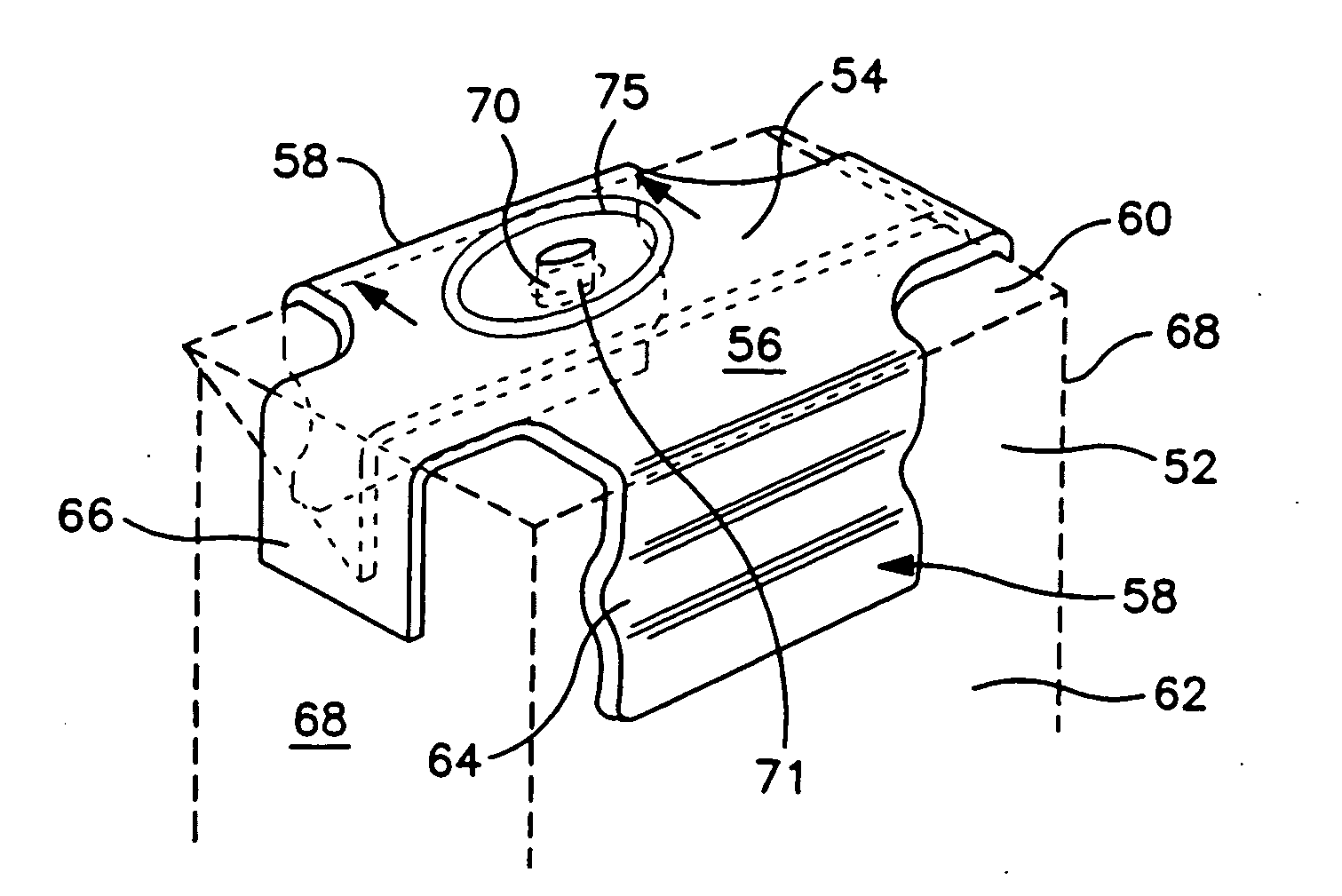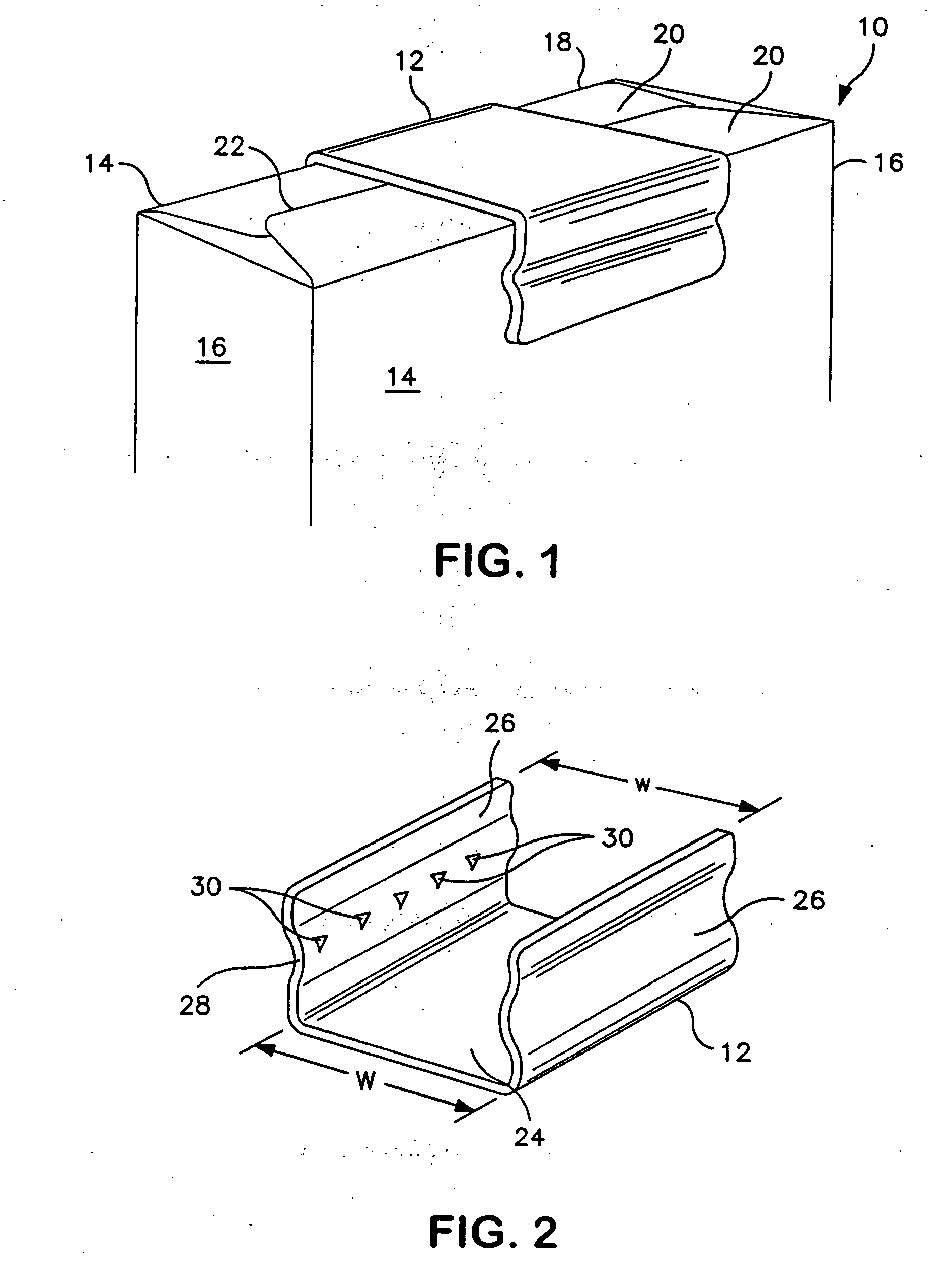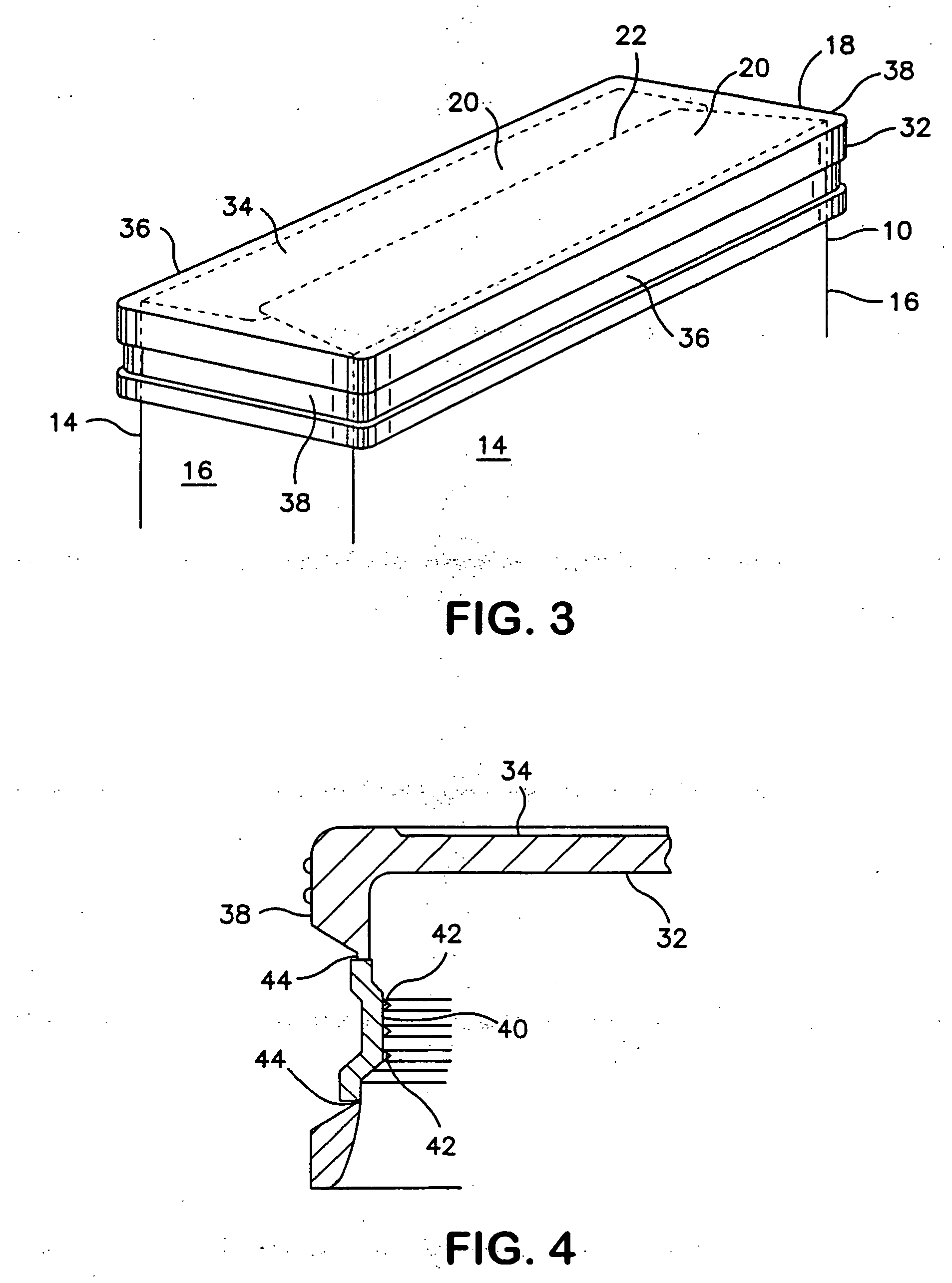Secondary protective lid
a protective lid and lid technology, applied in the field of materials packaging, can solve the problems of thwarting the possibility of resealing the box flap to secure the integrity of the contents, the tabs or other means are not particularly effective in closing and sealing the flap, and the polyethylene bag cannot be easily resealed by the consumer, so as to achieve the effect of extending the life of the foodstuff contained and being convenient to affixed to the packag
- Summary
- Abstract
- Description
- Claims
- Application Information
AI Technical Summary
Benefits of technology
Problems solved by technology
Method used
Image
Examples
Embodiment Construction
[0021]Turning first to FIG. 1, there is shown a perspective view of a package 10 having a secondary lid 12 secured thereto in accordance with the present invention. In this exemplary embodiment, the package 10 is illustrated as a typical cereal box having lateral sides 14, end panels 16 and a top 18. As is conventional, the top 18 is comprised of two flaps 20 that meet, and normally slightly overlap, at the free ends 22 at about the center of the top 18.
[0022]Turning to FIG. 2, there is a perspective view of the secondary lid 12 of the present invention, taken along with FIG. 1. As can be seen, the secondary lid 12 is in the shape of a clip that is generally U-shaped having a flat base 24 with two sidewalls 26 that extend therefrom. Thus, when the secondary lid 12 is affixed to the package 10 in its operative position, the flat base 24 overlays the top 18 of the package 10 and contacts the flaps 20 to hold those flaps 20 in their closed position. At the same time, the sidewalls 26 e...
PUM
| Property | Measurement | Unit |
|---|---|---|
| Pressure | aaaaa | aaaaa |
| Width | aaaaa | aaaaa |
| Content | aaaaa | aaaaa |
Abstract
Description
Claims
Application Information
 Login to View More
Login to View More - R&D
- Intellectual Property
- Life Sciences
- Materials
- Tech Scout
- Unparalleled Data Quality
- Higher Quality Content
- 60% Fewer Hallucinations
Browse by: Latest US Patents, China's latest patents, Technical Efficacy Thesaurus, Application Domain, Technology Topic, Popular Technical Reports.
© 2025 PatSnap. All rights reserved.Legal|Privacy policy|Modern Slavery Act Transparency Statement|Sitemap|About US| Contact US: help@patsnap.com



